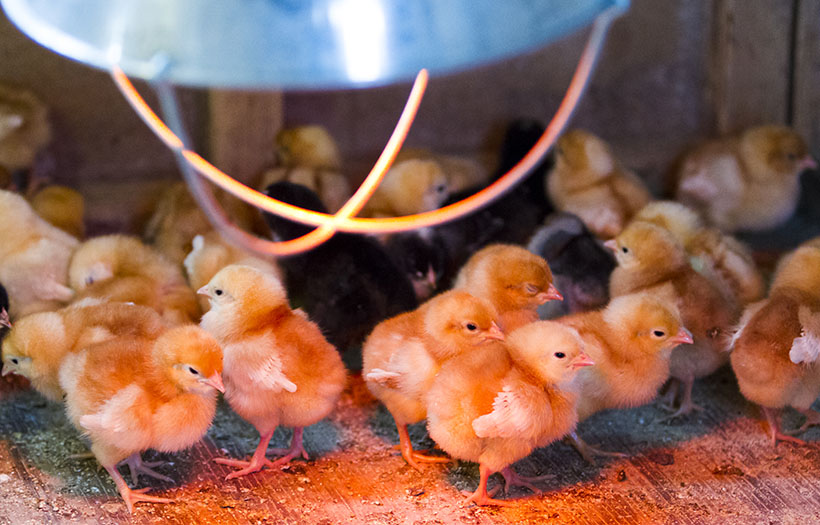Helping Baby Chicks Thrive

Many people associate spring with fuzzy baby chicks, but modern hatchery practices make chicks available year-round. Once you know which breed is right for you, select a reputable hatchery or dealer from which to purchase your chicks.
Young chicks must have a brooder for warmth and protection. Prepare the brooder by cleaning and disinfecting it at least two days before the chicks arrive. Once it has dried, cover the floor with 4 to 6 inches of dry litter material. Pinewood shavings or sawdust is recommended to aid in disease prevention. Hardwood litter is not recommended. Place the brooder in a draft-free location. Carefully position an incandescent bulb about a foot above the box floor to provide heat and add a second light in case one bulb burns out.
Newly hatched chicks will find their perfect temperature in the brooder. If it’s too hot under the bulb chicks will move away from the heat; if too cool they’ll move closer. Give chicks space to move about. Baby chicks huddle together when they’re cold, which can cause smothering or suffocation, so check your chicks regularly to be sure they are comfortable. Raise the height of the lights as they grow, because their need for artificial heat will diminish as they grow feathers.
Clean, fresh water is the most important thing to give your chicks. Make sure it is always available and that the waterers are clean. Check water levels daily to be sure your chicks are consuming enough. Chick starter grower rations are available in medicated and unmedicated formulas. Select one with the protein, vitamins and minerals chicks need to thrive. Sprinkle the feed on the brooder floor at first but use a chick feeder when the chicks are a few days old.
Given a snug brooder, fresh water and good food, your chicks will soon be big enough to move into their coop.
